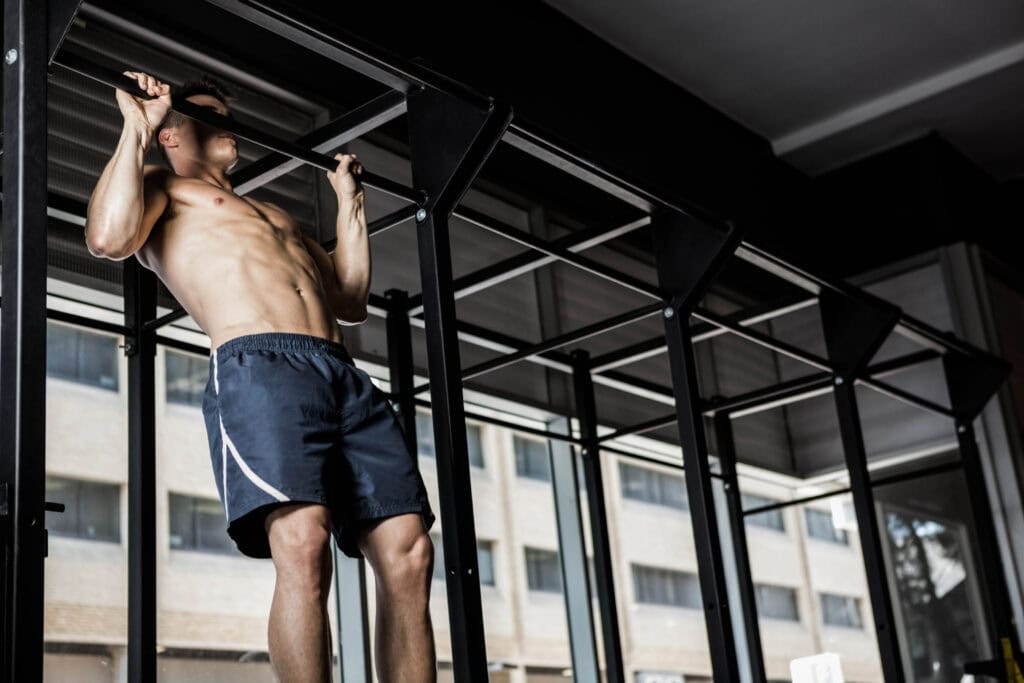Pull-ups and chin-ups are fundamental bodyweight exercises that target the upper body, particularly the back and arm muscles. Despite their similarities, these two exercises have distinct differences in muscle engagement, difficulty level, and benefits. This article delves into a short comparative analysis of pull-ups and chin-ups, backed by scientific references, to help you understand which exercise suits your fitness goals.
Muscle Engagement
Pull-Ups
Pull-ups primarily target the upper back muscles, including the latissimus dorsi, trapezius, and rhomboids. Additionally, they engage the biceps, forearms, and core muscles for stabilization.
- A study published in the Journal of Strength and Conditioning Research found that pull-ups activate the latissimus dorsi more effectively than chin-ups (Youdas et al., 2010).
Chin-Ups
Chin-ups, while also targeting the upper back, place a greater emphasis on the biceps due to the underhand grip. This grip alters the biomechanics, making chin-ups slightly easier for many individuals.
- Research indicates that chin-ups result in higher biceps brachii activation compared to pull-ups, making them an excellent choice for those looking to increase arm strength (Signorile et al., 2002).
Difficulty Level
Pull-Ups
Pull-ups are generally considered more challenging due to the pronated (overhand) grip, which requires greater engagement of the back muscles and forearms. The grip also reduces the contribution of the biceps, making it harder for those with less upper body strength.
Chin-Ups
Chin-ups are typically easier for beginners because the supinated (underhand) grip allows for greater biceps involvement, reducing the load on the back muscles. This grip also provides better mechanical advantage, making it a preferred starting point for many.
Benefits
Pull-Ups
- Strength and Muscle Development: Pull-ups are excellent for developing the upper back, shoulders, and core strength.
- Functional Fitness: Enhances grip strength and overall functional fitness, useful for various sports and daily activities.
- Posture Improvement: Strengthening the back muscles can contribute to better posture.
Chin-Ups
- Arm Strength: Chin-ups are superior for bicep development.
- Upper Body Strength: They still effectively target the upper back and core muscles.
- Accessibility: Easier for beginners, providing a stepping stone to more advanced pull-up variations.
Scientific Evidence
- Muscle Activation: A study by Youdas et al. (2010) found that while both exercises are effective, pull-ups elicited greater activation in the latissimus dorsi, whereas chin-ups showed higher activation in the biceps brachii.
- Joint Stress: According to a study in the Journal of Applied Biomechanics, the different grips in pull-ups and chin-ups result in varying stress on the shoulder joints, with pull-ups placing more strain on the shoulder’s external rotators (Lynn et al., 2009).
- Performance Enhancement: Research published in the European Journal of Applied Physiology suggests that incorporating both pull-ups and chin-ups into a training regimen can lead to balanced upper body development and improved overall performance (Andersen et al., 2014).
Stay Strong Together
JEFIT is a top-rated fitness app designed to help you achieve your workout goals with ease. This comprehensive app offers personalized workout plans, detailed exercise instructions, and a robust tracking system to monitor your progress. Whether you’re a beginner or a seasoned athlete, JEFIT provides everything you need to stay motivated and on track. With its user-friendly interface and extensive exercise library, JEFIT is the ultimate companion for anyone looking to enhance their fitness journey. Download the app today and take the first step towards a healthier, fitter you.
Key Features of JEFIT
- Personalized Workout Plans: Tailored routines to meet your specific fitness goals.
- Exercise Library: Over 1,300 exercises with detailed instructions and animations.
- Progress Tracking: Track your workouts, body measurements, and progress over time.
- Community Support: Connect with other fitness enthusiasts for motivation and tips.
- Top Hip & Back Extension Exercises for Posterior Chain Power - April 23, 2025
- Best Exercises to Build Strong & Defined Shoulder Muscles - April 21, 2025
- Whey vs. Casein: What’s the Best Protein for Building Muscle - April 18, 2025
